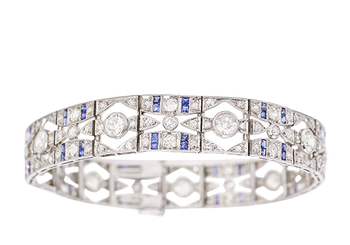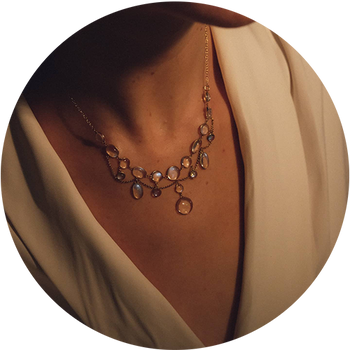19th Century Japanese Geisha Tapestry
19th Century Japanese Geisha Tapestry
$7,500.00
Description
DATE: Victorian, c.1860
Remarkable antique tapestry depicting various geisha in a traditional Japanese garden with Shinto shrines, an arched bridge, and trailing flowers and foliage. The women are engaged in their particular specialties, including: lute playing, flower arranging, dancing, and conversation - potentially enjoying a day off as there don't appear to be any entertainees present. The level of detail is incredible, and, combined with the muted colour palette, the overall effect is strikingly beautiful. Particularly effective are the coloured kimonos and the trailing flowers and foliage. Mounted in an ornate gilt wood frame.
The word geisha comprises two kanji (Japanese characters): gei, meaning "art", and sha meaning "person" or "doer", so the literal translation to English is "artist" or "artisan". More specifically it refers to a group of highly skilled performance artists, mostly but not exclusively women, who have trained extensively in one or more of the traditional Japanese arts including music, dance, and singing, as well as being proficient conversationalists and hosts. Their striking appearance involves white makeup (oshiroi) worn with red and black eye and eyebrow makeup, red lips, and pink blusher. Geisha always wear kimono while working, often also when not working, however the type of dress varies based on age, occasion, region, and season. The geisha first appeared in the mid 1700s, although the traditions stem back over 1000 years, after the Imperial court moved to Heian-kyo (Kyoto) in 794 aspects of now-traditional Japanese arts and aesthetics began to develop - later contributing directly to the conditions under which the geisha emerged. Walled-in 'pleasure courts' known as yukaku were built in the 16th century, and by the turn of the 18th century the first geisha, or forerunners of the geisha, were performing for guests in these institutions - entertainers providing song and dance from a variety of sources. The common misconception that modern geisha are prostitutes (they're not) apparently originated due to the conflation of Japanese courtesans and sex workers, who historically also wore the kimono (although it is true that the first woman to call herself "geisha" was a prostitute from Fukagawa, circa 1750, who had become a skilled singer and shamisen player.
MEASUREMENTS
Frame: 108 x 57cm (42.5 x 22.5 inches)
MARKS
CONDITION
Excellent, tapestry mounted on a wooden board for protection



























Follow Us
Dealing Podcast blog instagram TikTok facebook